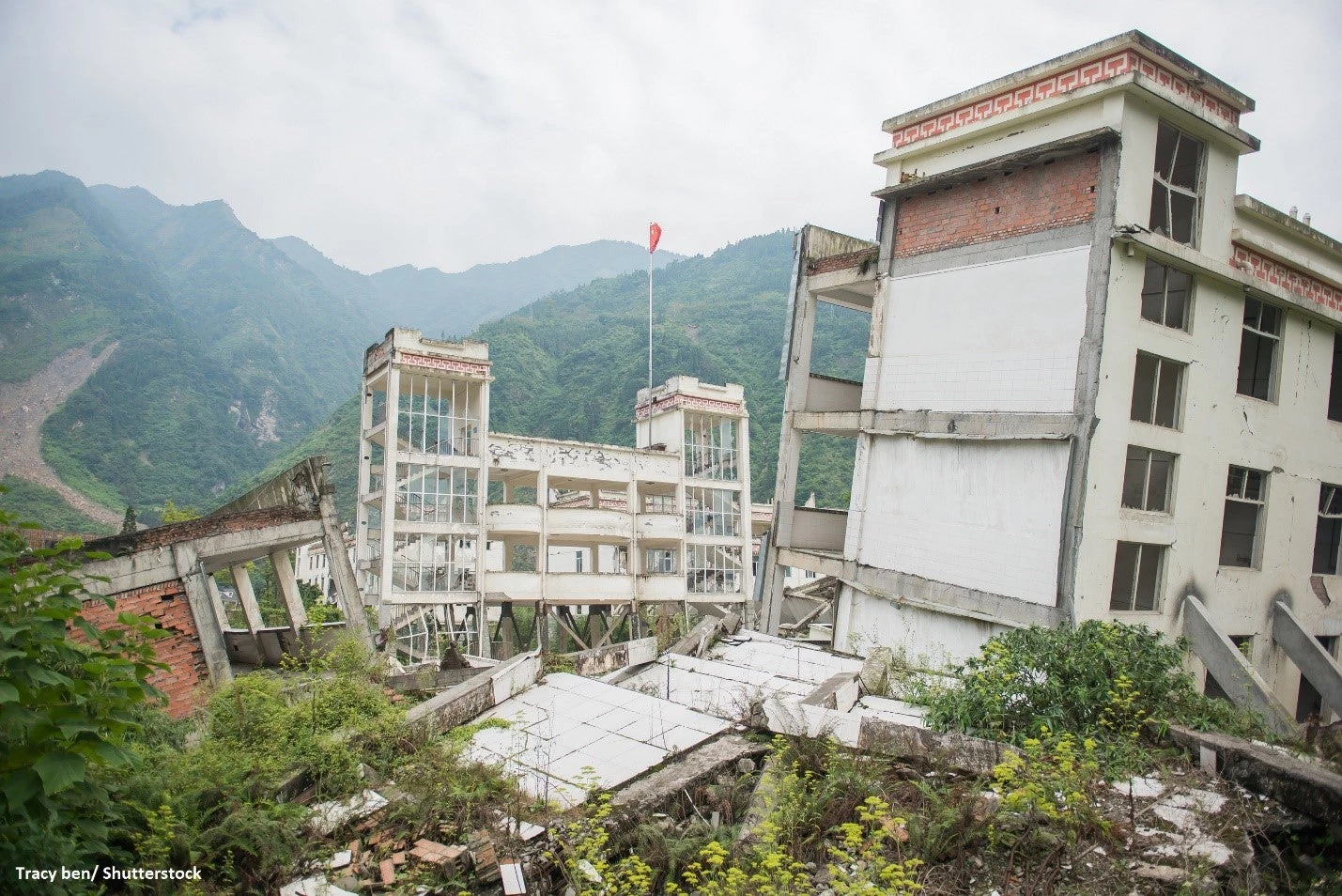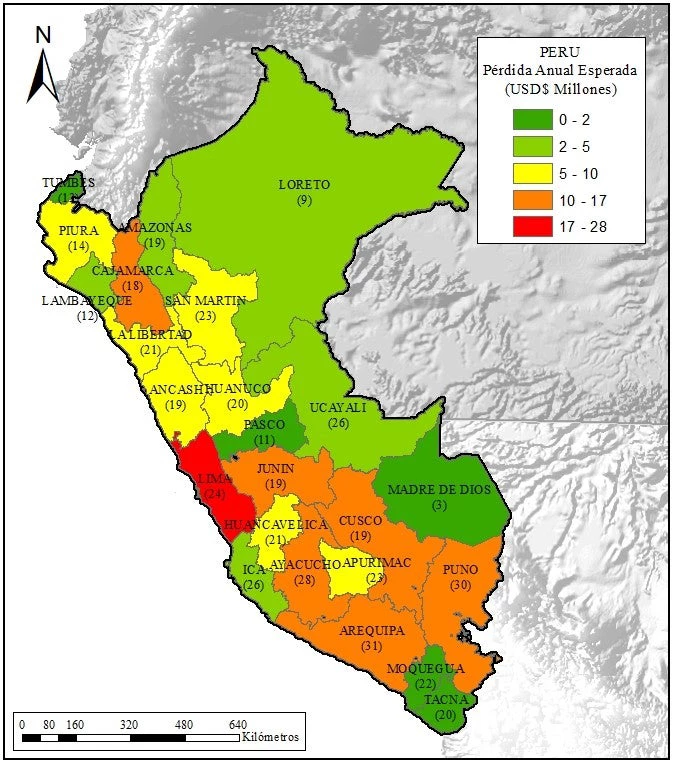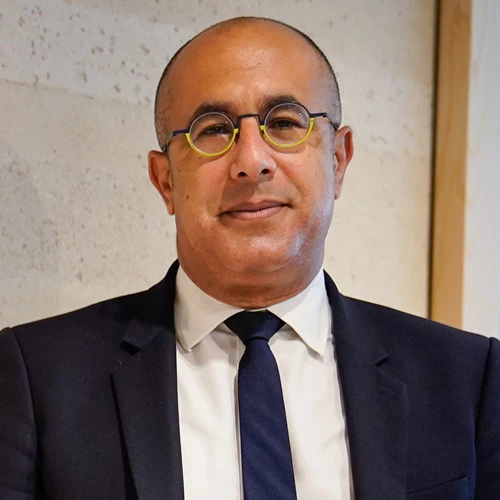
“At 14:28:04 on May 12, 2008, an 8.0 earthquake struck suddenly, shaking the earth, with mountains and rivers shifted, devastated, and parted forever….” This was how China’s official report read, when describing the catastrophic consequences of the Sichuan earthquake, which left 5,335 students dead or missing.
Just two years ago, in Nepal, on April 25, 2015, due to a Mw 7.8 earthquake, 6,700 school buildings collapsed or were affected beyond repair. Fortunately, it occurred on Saturday—a holiday in Nepal—otherwise the human toll could have been as high as that of the Sichuan disaster, or even worse. Similarly, in other parts of the world—Pakistan, Bangladesh, Philippines, Haiti, Ecuador, and most recently Mexico—schools suffered from the impact of natural hazards.
Why have schools collapsed?

infrastructure in Peru.
Geographical distribution of Average Annual Loss
- Low institutional capacity stands in the way for governments to deal with large stock of existing school buildings that do not comply with current building codes.
- Poor planning of new schools as well as a lack of proper inventory and hazard information often lead to unsafe schools.
- Inadequate construction technologies, poor construction quality, and poor maintenance are also risk drivers.
- Budget constraints and a lack of long term investment planning make school infrastructure managers focus on the short term.
The World Bank launched the Global Program for Safer Schools (GPSS) three years ago with support from the Global Facility for Disaster Reduction and Recovery, or GFDRR. We have invested in safe school programs in countries such as Colombia, Philippines, Turkey ( ISMEP), among others.
Now housed under the World Bank’s Social, Urban, Rural and Resilience Global Practice, the program seeks to boost and facilitate informed large-scale investments to make new and existing school infrastructure safer and more resilient to natural disasters, helping build better learning environments.
Along the way, we have learned about the impacts, causes, and solutions to make schools safer and more resilient. For example, through risk modeling techniques, we can estimate quantitatively potential losses and damages in school infrastructure given hazard scenario events (see Figure 1).
How can we accelerate progress toward better solutions?
Despite international agreements to reduce disaster risk and address climate change ( Comprehensive School Safety), there has been little progress to promote school infrastructure safety.
Vulnerability reduction interventions have been implemented in a few developing countries, such as Turkey and Peru, but risks in low and middle-income countries located in hazard-prone areas are far from being addressed.
Policy changes and decisions on the safety of school infrastructure are likely to happen if at least three conditions are in place:
- Evidence-based arguments are used to inform the whole infrastructure process—the planning, design, construction, operation, maintenance, and rehabilitation of schools;
- Financial incentives linked with progress on risk reduction are created to encourage action by central and local governments; and
- Affordable technical solutions are available and customized to the local context.
Most importantly, we look forward to promoting a wide discussion around the topic of how to accelerate solutions at scale for safer and improved learning environments for children in developing countries.
Welcome to the GPSS blog series!
- Subscribe to our Sustainable Communities newsletter
- Follow us on Twitter (@WBG_Cities) and Flipboard




Join the Conversation